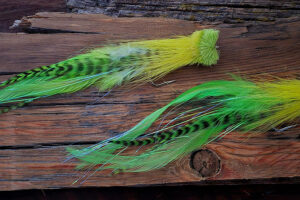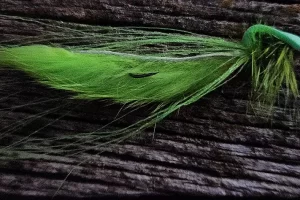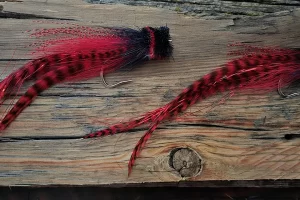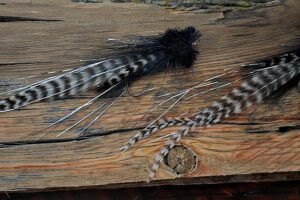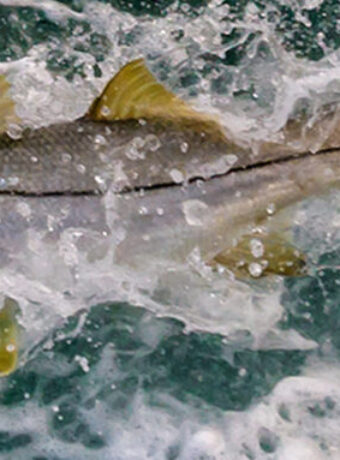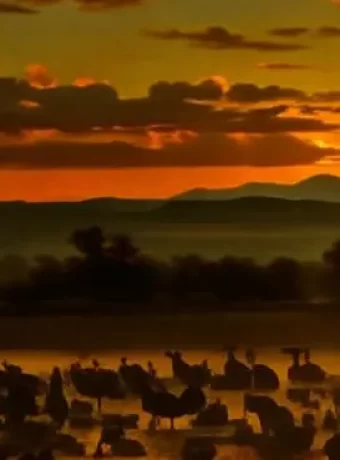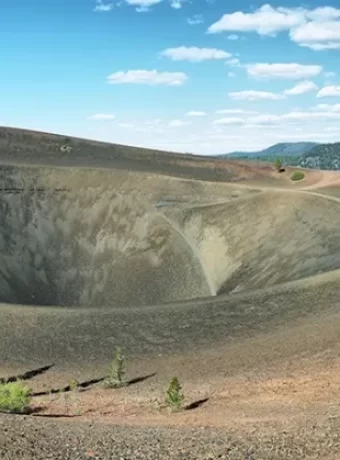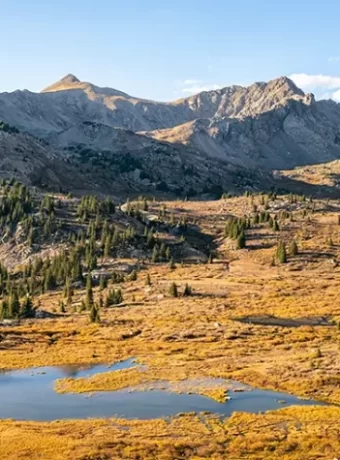Discover the Top Nebraska Fly Fishing Spots for Adventure
Nebraska, the heartland of America, isn’t the first place that comes to mind for fly fishing. Yet, this state holds many hidden gems for anglers of all kinds. Whether you prefer trout in clear streams or bass in quiet lakes, this guide explores the top Nebraska fly fishing spots.
Ready to discover Nebraska’s best-kept fly fishing secrets? These top Nebraska fly fishing spots await. Let’s begin.
Table of Contents
Fly Fish Lake McConaughy
Lake McConaughy, or “Big Mac,” is a fly fisherman’s dream. This massive lake offers diverse fishing. It’s a hotspot for walleye, bass, and trout. This makes it a great spot for fly fishing in Nebraska. The lake’s size can feel overwhelming. But this just means there are tons of spots to explore.
Fly fishing at Lake McConaughy isn’t just about the fish. It’s about the experience. Picture yourself casting your line. The sun rises over the Sandhills. The calm water reflects the colorful sky. This is what Big Mac offers. But don’t just take my word for it. Experience it yourself!
So, how do you fly fish this giant lake? Focus on the shallows, especially in spring. This is where warm water fish like bass and walleye hang out. Use streamers and poppers. These mimic baitfish and other tasty snacks. Trout prefer cooler water. Look for them in deeper areas or near inlets. Small nymphs and dry flies work best here.
Remember your top flies for Lake McConaughy. For trout, bring Blue-Winged Olives (BWOs) and Elk Hair Caddis. These match the local hatches. Bass and walleye love Clouser Minnows and Deceivers. A few Woolly Buggers never hurt either.
Explore the different areas of Lake McConaughy. Each spot holds different fish. Check out the dam area. Fish the inlets. Explore the coves. Vary your retrieve. This keeps the fish interested. And don’t forget to have fun!
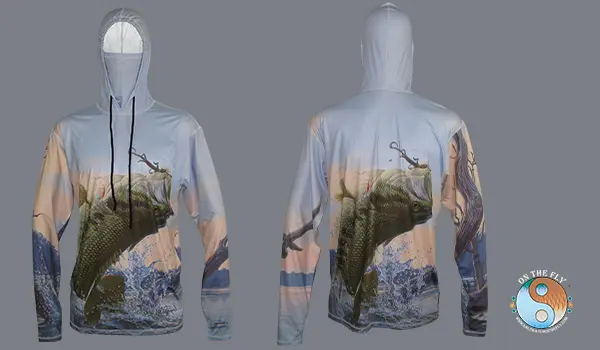
Nebraska Bass Fly Fishing Sun Protective Graphic Hoodie
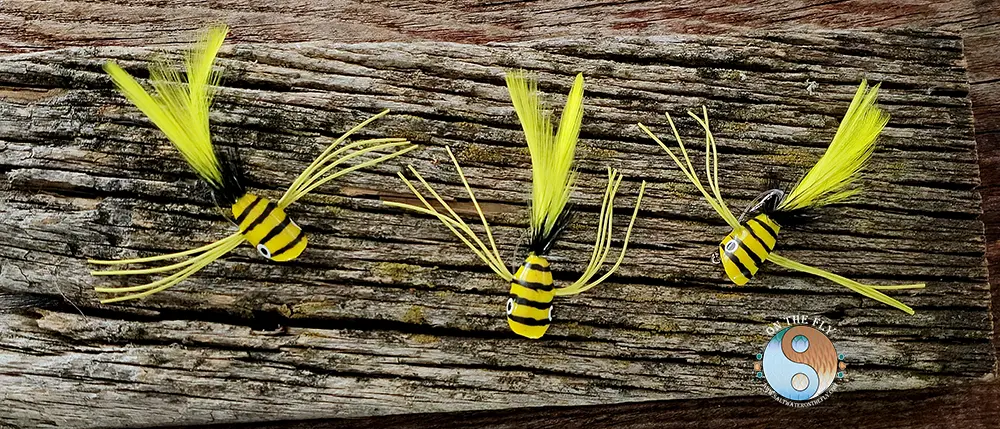
Bass & Panfish Fly Fishing Poppers
Fly Fish Holmes Lake
Holmes Lake, nestled in southeast Lincoln, offers a sweet escape for fly fishers. This isn’t a backcountry adventure. But it’s a chance to cast a line close to town. The lake holds a healthy mix of warm-water fish. This means you can target largemouth bass, bluegill, and crappie with your fly rod.
While Holmes Lake isn’t famous for trout, it offers a different kind of fly fishing fun. Think topwater poppers for bass. Picture delicate dry flies for bluegill. This lake gives you a chance to hone your skills. Experiment with different techniques.
Because it’s an urban lake, Holmes Lake gets busy. This means you might have to share the water with boaters, kayakers, and other anglers. But don’t let that stop you. There are plenty of spots to find some peace. Cast from the shoreline, or wade into the shallows. Just be respectful of other lake users.
One of the best things about Holmes Lake is its accessibility. The paved trails around the lake give you easy access to the water. This makes it a good spot for fly fishers of all abilities. Whether you’re a seasoned pro or just starting, Holmes Lake is a welcoming place to cast a line.
Here are a few tips for fly fishing Holmes Lake:
- Bring a variety of flies. Bass and panfish can be picky eaters. Pack poppers, streamers, and nymphs.
- Fish the shallows. Look for weed beds, submerged trees, and rocky areas.
- Fish early in the morning or late in the evening. This is when the fish are most active.
- Be patient. It might take some time to find the fish. But when you do, it’s worth it.
Holmes Lake might not be a “classic” fly fishing destination. But it offers a fun and accessible way to experience the sport. So, grab your fly rod, tie on a fly, and get ready for a good time.
Fly Fish Niobrara River
The Niobrara River is a fly fisherman’s dream. This scenic river cuts through some of Nebraska’s most beautiful landscapes. This river gives you a chance to catch a mix of trout, bass, and panfish. The Niobrara offers many different access points. This makes it easy to find the perfect spot for your skill level.
One popular spot is near Valentine, Nebraska. This area is close to Merritt Reservoir, another great fishing spot. You’ll find the river here holds good numbers of brown and rainbow trout. These fish are eager to take a well-presented dry fly. The water here is usually crystal clear. This lets you spot the fish holding in the deeper pools and riffles.
Further downstream, the Niobrara widens and slows. This creates ideal habitat for smallmouth bass. These bass are aggressive and put up a great fight. A streamer or Clouser Minnow will get their attention. Don’t forget about the panfish! The Niobrara is also home to several panfish species. These fish are fun to catch on light tackle with smaller flies.
If you plan to fly fish the Niobrara River, remember your Blue-Winged Olive flies. Also pack some Elk Hair Caddis and Stimulators. These flies will match the hatches throughout the year. The Niobrara is also a great place to throw some hoppers and crickets in the summer. A Hare’s Ear nymph and a Pheasant Tail nymph will also work wonders. For those looking to chase larger fish, a Woolly Bugger or Muddler Minnow will entice the bass. Make sure you check the local regulations for license requirements and any special rules.
Whether you are a beginner or an experienced angler, the Niobrara River in Nebraska has something to offer. With its beautiful scenery, diverse fish species, and many access points, it’s a great spot for your next fly fishing adventure. But don’t forget the Sandhills Region, with its own collection of streams and lakes, for even more Nebraska fly fishing opportunities. Also, check out Lake McConaughy, with its walleye and bass. And don’t miss the Platte River and its many access points.
trout fishing in a beautiful setting. Anglers will find Long Pine Creek, a designated trout stream in north-central Nebraska, featuring challenging wading, abundant hatches, and impressive trout populations. Explore other options, like Pine Creek for beautiful brown trout.
A great all around fly rod for Nebraska fly fishing is a 9′ 6-weight fly rod.
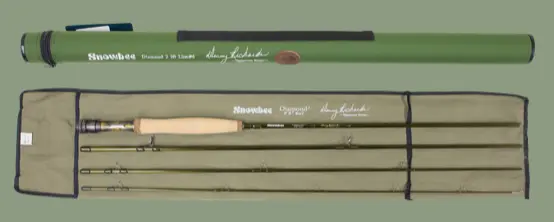
A Great Fly Rod: 9' 6-Weight Panfish, Trout, & Bass
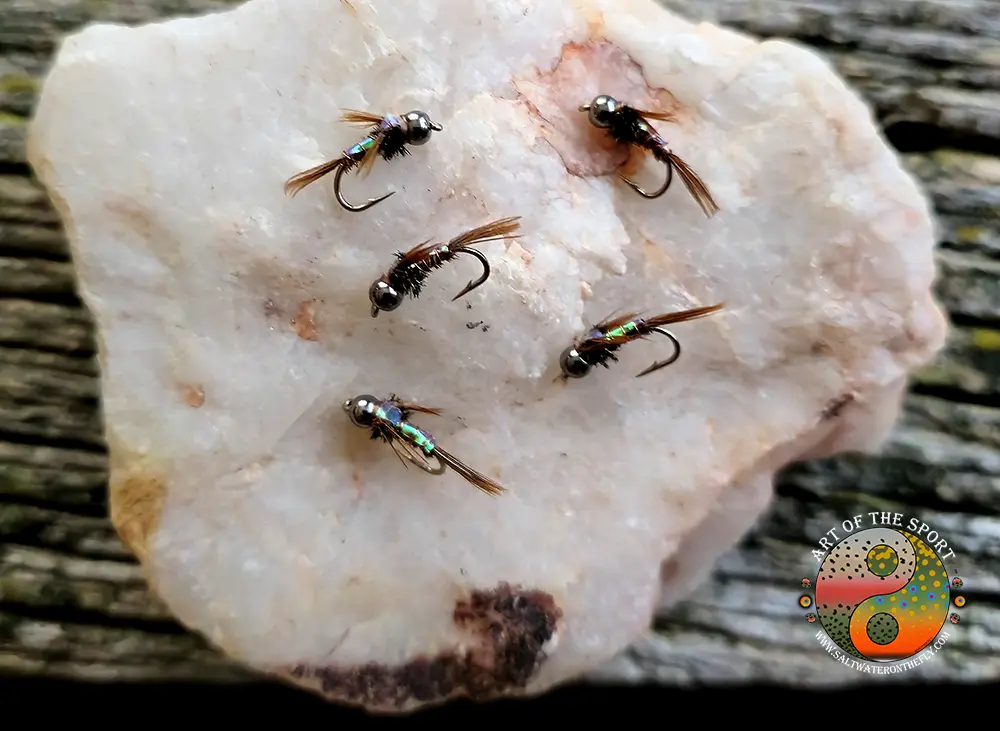
Beadhead Pheasant Tails Flash Back
Complete sun protection the water, Our Fishing Sun Gloves are a UPF-50 with a stripping guard your stripping finger for great streamer fly fishing.
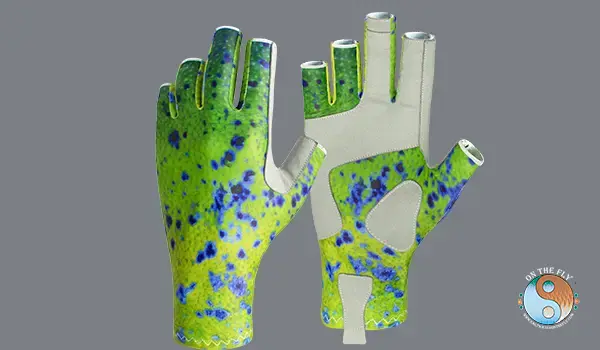
Mahi Mahi Fishing Gloves
Fly Fish Elmwood Reservoir
Elwood Reservoir, near the town of Elwood, Nebraska, offers a surprising variety of fish. This makes it a fun spot to fly fish. The reservoir is a great place to catch trout, bass, and panfish. It’s also a good spot for walleye, though they’re less common targets for fly anglers. But hey, sometimes it’s fun to mix things up!
This smaller reservoir is less pressured than some of Nebraska’s bigger waters. This can mean better fishing. Because it’s smaller, you can easily explore different areas. You can find your own honey hole. Try fishing from the shore, wading, or using a float tube or small boat. All these options can be successful.
If you are going after trout, consider using dry flies like Blue-Winged Olives (BWOs), Elk Hair Caddis, or Stimulators. Nymphs such as Hare’s Ear, Pheasant Tail, and Copper John can also be effective. For bass and panfish, try Clouser Minnows, Deceivers, or poppers. If you see fish rising to the surface, definitely tie on a dry fly!
Elwood Reservoir is part of the larger Republican River basin. This area of Nebraska has a lot of agricultural land. The reservoir is important for irrigation and recreation. Keep this in mind as you fish. Be respectful of the environment and other anglers. Practice catch and release whenever possible. This helps keep the fish population healthy.
The Sandhills region isn’t too far from Elwood Reservoir. This gives you even more fly fishing options. You could spend a whole week exploring the different lakes and streams in the area. Many of these hold trout, bass, and panfish. So, pack your fly rods, your favorite flies, and get ready for a Nebraska fly fishing adventure!
Fly Fishing Olive Creek Lake
Olive Creek Lake, located in southeastern Nebraska, offers a serene and tranquil atmosphere for fly fishermen. This 175-acre lake is nestled among rolling hills and scenic countryside, providing an ideal setting for a peaceful day of fishing.
Fish Species
- Largemouth Bass: Olive Creek Lake is home to a healthy population of largemouth bass, with many fish in the 1-3 pound range.
- Channel Catfish: Channel catfish are abundant in the lake, with fish up to 10 pounds available.
- Bluegill: Bluegill are plentiful, with many fish in the 6-8 inch range.
- Crappie: Both white and black crappie can be found in the lake, with fish up to 12 inches available.
Fly Fishing Opportunities
- Structure: Olive Creek Lake features several submerged structures, including sunken logs, rocks, and weed beds, providing ample opportunities for fly fishermen to target bass and panfish.
- Inlets and Outlets: The lake’s inlets and outlets offer areas of concentrated fish activity, particularly during periods of changing water levels.
- Shoreline: The lake’s shoreline is relatively accessible, with several areas of shallow water and weed beds that can be waded or fished from the bank.
Recommended Flies
- Bass: Olive or brown Woolly Buggers, streamers, and poppers
- Panfish: Small dry flies, such as Parachute Adams or Griffith’s Gnats, and tiny nymphs like Hare’s Ear or Pheasant Tails
- Catfish: Large, heavy nymphs or streamers, such as a San Juan Worm or a black Stonefly
Regulations and Access
- Fishing License: A valid Nebraska fishing license is required to fish Olive Creek Lake.
- Boat Launch: A boat launch is available on the northwest side of the lake.
- Bank Access: Shoreline access is available at several points around the lake, including a designated fishing pier.
Tips and Reminders
- Respect the Environment: Be mindful of the lake’s ecosystem and handle fish gently to ensure their survival.
- Practice Catch-and-Release: Consider releasing fish to help maintain a healthy and sustainable fish population.
- Check Local Regulations: Verify local fishing regulations and restrictions before your trip.
Getting There
Olive Creek Lake is located approximately 20 miles southeast of Lincoln, Nebraska. From Lincoln, take Highway 2 south to Highway 43, then follow Highway 43 east to the lake.
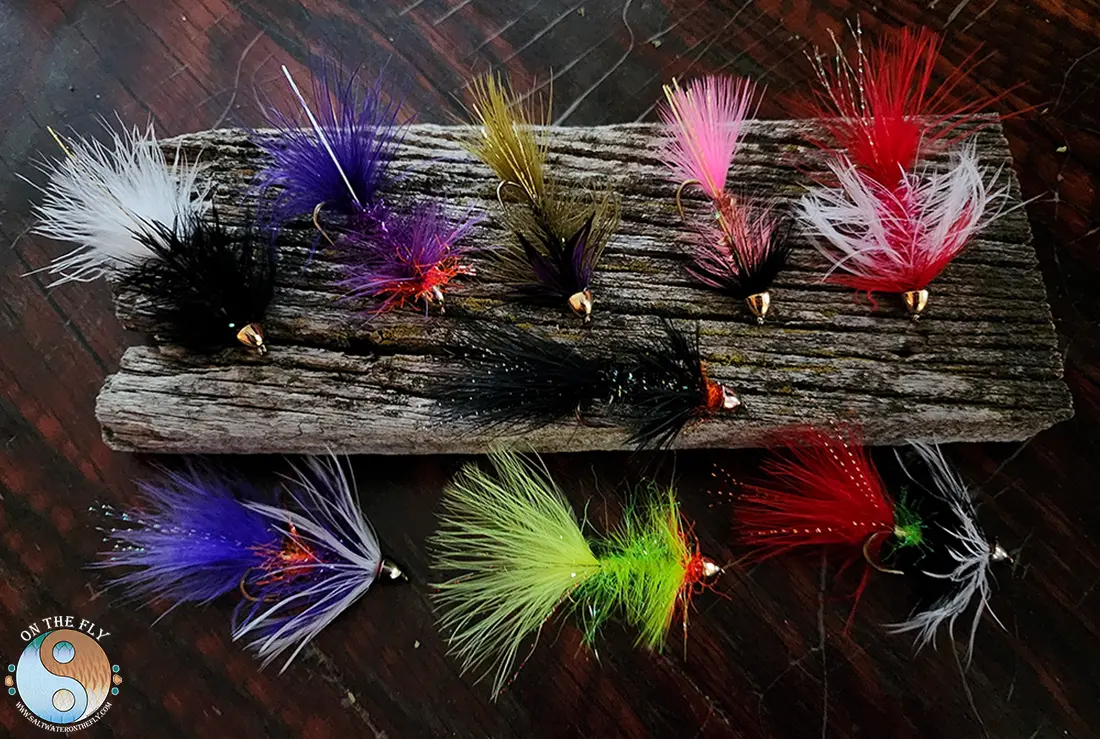
Woolly Buggers
A Woolly Bugger can be the save the day pattern. A good fly fisher always has a selection in their fly box.
Fly Fish Box Butte Reservoir
Box Butte Reservoir, nestled in Hemingford, Nebraska, offers a sweet fly fishing escape. This smaller lake is a haven for trout and panfish. It’s a great spot to test your fly fishing skills. The calm waters make it perfect for beginners. But, seasoned anglers will love the challenge too.
The reservoir is stocked with rainbow trout. You might even hook a feisty brown trout. Panfish, like bluegill and crappie, are also plentiful. This variety makes it a fun spot to experiment with different flies.
For trout, try a classic dry fly like the Adams. A Blue-Winged Olive (BWO) can also be effective, especially during hatches. If the fish aren’t rising, switch to a nymph. A Hare’s Ear or Pheasant Tail nymph will often do the trick. For the panfish, a small popper or sponge spider can be exciting.
Box Butte Reservoir is more than just a fishing spot. The surrounding scenery is stunning. The rolling hills of the Nebraska Sandhills provide a beautiful backdrop. You can easily spend a whole day here. Bring a picnic lunch and enjoy the peace and quiet. You can even hike the nearby trails. After a day of fishing, camp under the stars.
If you’re planning a Nebraska fly fishing adventure, add Box Butte Reservoir to your list. This little gem offers a unique experience. You can enjoy the challenge of fly fishing. But, you also can take in the beauty of the Nebraska landscape.
Remember to check the local fishing regulations before you go. Make sure you have the right License and permits. This helps protect the fish populations. It ensures a great fishing experience for everyone.
Fly Fish Standing Bear Lake
Standing Bear Lake sits in Omaha, Nebraska. It’s a great spot for a relaxing day of fly fishing. This urban lake offers nice scenery and a mix of fish. You can catch bass, panfish, and catfish here. This makes it a good choice for fly fishers of all skill levels. The lake is easy to get to. It also has plenty of shoreline access.
Fly fishing at Standing Bear Lake is best from a boat or float tube. This lets you reach deeper water. But, shore fishing can also be productive. Focus on areas with structure, like fallen trees or weed beds. These spots attract fish. They offer protection from predators.
For bass, try using streamers. Clouser Minnows and Deceivers are good choices. These flies imitate baitfish. Bass love to eat them! You can also try poppers. Poppers make a splashing sound when you retrieve them. This attracts curious bass.
If you’re targeting panfish, use smaller flies. A Panfish Spider or Sponge Spider works well. These flies imitate insects that panfish eat. You can also use nymphs like Hare’s Ear or Pheasant Tail. These imitate underwater insects.
No matter what you’re fishing for, remember to check the local fishing regulations. Get any permits you need. Standing Bear Lake is a great place to enjoy a day of fly fishing. So grab your fly rod and get ready to catch some action!
Fly Fish Zorinsky Lake
Zorinsky Lake sits right in Omaha. It’s a great spot if you like to fish but don’t want to travel far. This urban lake gives you a chance to catch some nice fish. Plus, you can enjoy the city views at the same time.
Although Zorinsky Lake isn’t known for trout, it does have other fish. You can find bass, panfish, and catfish. These fish are fun to catch with a fly rod. This lake is perfect for a quick fishing trip. Or, you can spend the whole day there. Many people like this spot because it’s easy to get to. It’s close to everything.
Fly fishing at Zorinsky Lake is a good way to relax. This lake is popular. But there’s still plenty of space for everyone to fish. Because it’s in the city, you can grab a bite to eat nearby. This makes it a convenient spot for anglers. You’ll have everything you need close at hand. So, next time you want to go fly fishing, think about Zorinsky Lake. It’s a great place to fish without leaving the city.
Some great flies to use at Zorinsky Lake include:
- Clouser Minnow: Bass and panfish love this fly.
- Deceiver: This fly looks like small baitfish and crawdads. It works well for bass.
- Bass Popper: If you see fish feeding on the surface, try a popper.
- Panfish Spider: This is a simple but effective fly for panfish.
- Sponge Spider: This fly imitates different insects. It’s a good choice if you aren’t sure what the fish are eating.
Remember to check the local fishing rules. You’ll need to get a Nebraska fishing permit before you go. This will let you fish legally. With a little planning, you can have a great day of fly fishing at Zorinsky Lake.
Nebraska Musky Fly Fishing Lakes
Nebraska might not be famous for musky on the fly, but a few spots are worth exploring. These sneaky fish like weedy areas and quiet corners. Think of places like Merritt Reservoir and Calamus Reservoir. These lakes are big and have plenty of bays and inlets to explore.
Musky Flies Fly Fish Nebraska
- Chartreuse Yellow Buford Muskie Fly
- Chartreuse Rabbit Gurgler for Musky Top Water Action
- Black Red Buford Muskie Fly
- Black Buford Musky Fly
Merritt Reservoir Musky Fly Fishing
Merritt Reservoir is a hidden gem in the Sandhills Region of Nebraska. It offers amazing fly fishing for musky. This scenic lake holds a good mix of fish species. But musky are the real prize. Merritt Reservoir is a top Nebraska fly fishing spot. The lake’s clear waters and abundant forage create a perfect environment for these elusive predators.
Musky are known for their size and aggressive strikes. Fly fishing for them can be an exciting challenge. They are often called the “fish of 10,000 casts.” This is because of their picky eating habits. But the reward of landing a musky on the fly is well worth the effort.
When fly fishing for musky at Merritt Reservoir, large, brightly colored flies are often effective. These mimic the baitfish and other prey that musky feed on. Streamers like the Woolly Bugger, Muddler Minnow, Sculpzilla, and Baitfish Streamer are good choices. Also, try using large topwater flies like a Bass Popper or Sponge Spider to entice aggressive surface strikes. This can be incredibly exciting.
While Merritt Reservoir is a great spot for fly fishing, remember that Nebraska has many other fantastic locations. From trout streams to bass-filled lakes, there are plenty of opportunities to cast a line. Some other spots include the North Platte River’s Miracle Mile and Grey Reef. Lake McConaughy also offers diverse fly fishing action. And don’t forget the Niobrara River and the Cherry County Lakes. All offer excellent fly fishing for a variety of species. So, grab your fly rod and explore the many fly fishing spots Nebraska has to offer.
Calamus Reservoir Musky Fly Fishing
Calamus Reservoir isn’t just another Nebraska fly fishing spot. It’s a hidden gem, especially if you’re after musky. This reservoir, nestled in the Sandhills Region, boasts a healthy population of these elusive predators. But, fly fishing for musky here presents a unique challenge. It’s a game of patience and strategy.
This doesn’t mean it’s impossible. With the right approach, you can hook into a musky of a lifetime. The key is understanding their behavior and the reservoir’s layout. Musky are ambush predators. They like to lurk in weedy areas and around submerged structure.
So, where should you focus your efforts? Target areas with thick vegetation, drop-offs, and rocky points. These spots provide cover for musky and attract their prey fish. Look for areas with clear water near weed beds. This allows you to spot fish and make accurate casts. Also, pay attention to wind direction. Musky often face into the wind, waiting to ambush unsuspecting prey.
Now, let’s talk about fly selection. Large, brightly colored flies are the go-to choices for musky. Because these fish have sharp teeth, use a wire leader to prevent bite-offs. Here are a few fly patterns that work well at Calamus Reservoir:
- Large streamers: These imitate baitfish and can trigger aggressive strikes.
- Muddler minnows: These versatile flies mimic a variety of prey items.
- Sculpzillas: These modern streamers are designed to entice even the most stubborn musky.
When retrieving your fly, vary your speed and action. A combination of slow retrieves and quick strips can be effective. Remember to pause occasionally. This allows the fly to sink and can trigger strikes from following fish. Because musky are powerful fighters, use a heavy rod and reel setup.
Fly fishing for musky at Calamus Reservoir is a thrilling experience. It tests your skills and patience. But the reward of landing one of these freshwater giants is well worth the effort. This reservoir offers an exciting opportunity for adventurous anglers. So, grab your fly rod, head to Calamus, and get ready for the fight of your life.
Look for areas with thick vegetation. Muskies are ambush predators. They love to hide and wait for their prey. Weeds, lily pads, and submerged timber are all great spots to try your luck.
Big flies are key for musky. Think large streamers that mimic baitfish or other prey. Because musky are aggressive, don’t be afraid to experiment with flashy colors and patterns. Bright oranges, yellows, and chartreuse can often trigger a strike.
Fly fishing for musky can be tough. These fish are known for their strength and elusiveness. But landing one on the fly is a rewarding experience. A sturdy fly rod and reel are essential for battling these freshwater giants. And a wire leader is a must-have. Musky teeth are sharp. You don’t want to lose your fly or your fish!
Some other Nebraska lakes to consider are the Cherry County Lakes. These smaller lakes often hold good numbers of musky. They also provide a quieter fly fishing experience compared to the larger reservoirs. Don’t forget the Sandhills Region. This vast area offers a ton of lakes and streams. Many hold musky and other fish species like trout, bass, and panfish. This is a great place to get lost and explore.
Before you head out, remember to check the Nebraska fishing regulations. Make sure you have the necessary permits. Now get out there and try your luck with some Nebraska musky!
Essential Flies and Gear for Nebraska
Choosing the right flies is crucial for Nebraska fly fishing success. Consider packing Blue-Winged Olives (BWOs), Elk Hair Caddis, Stimulators, and Adams for dry fly fishing. For nymphs, try Hare’s Ear, Pheasant Tail, Copper John, and Prince Nymphs.
Woolly Buggers, Muddler Minnows, and various baitfish streamers are effective streamer choices. If targeting bass, Clouser Minnows and Deceivers tend to work well. Pack a 5-weight, 9-foot fly rod with a matching leader for trout, and a heavier 6 to 8 weight rod for bass fishing on the lakes. Don’t forget your fishing license and fly box.
Tips and Regulations for Nebraska Fly Fishing
Obtain a Nebraska fishing license if required by age and residency. Study the local regulations for licenses, permits, and public access points. Be aware of private property boundaries along many streams.
The statewide trout bag limit is five, with only one over 16 inches. The possession limit is twelve trout. Respect these regulations to maintain healthy fish populations and ensure fishing opportunities for future generations. Consult the Nebraska Game and Parks Commission website for up-to-date information. Learn more about Musky Fly Fishing and Pike Fly Fishing.
FAQs about Top 20 Nebraska Fly Fishing Spots
Where is the best trout fishing in Nebraska?
While Nebraska isn’t famous for big trout fisheries, there are several good waters. The Niobrara River, Long Pine Creek, and Verdigre Creek are excellent choices.
While much of the Niobrara River flows through private property, public access is available at Agate Fossil Beds National Monument. Here, anglers can fish for rainbow and brown trout stocked annually by the Nebraska Game and Parks Commission. These stocked rainbows offer exciting opportunities for anglers.
Where is fly fishing the most popular?
Fly fishing has a strong following throughout Nebraska. While many anglers use live bait or artificial lures, fly fishing offers unique advantages in certain waters. Many of Nebraska’s streams and rivers are home to naturally reproducing trout populations, including brook trout and brown trout.
The Miracle Mile stretch of the North Platte River in western Nebraska is exceptionally popular. This area supports a robust rainbow trout fishery, offering exciting fishing opportunities.
Where is the Miracle Mile fly fishing?
The Miracle Mile is in western Nebraska near North Platte. It flows below Kingsley Dam, east of Lake McConaughy. However, this famous waterway starts downstream at the Diversion Dam.
The North Platte River flows west of I-25 near Sutherland. It continues east where Highway 30 merges near Maxwell before reaching North Platte. This mile stretch is a popular fishing destination.
Where can I catch big fish in Nebraska?
Merritt Reservoir and Lake McConaughy (often called “Big Mac”) are great for trophy fish. Expect walleye, smallmouth and largemouth bass, and other Nebraska game fish. Lake McConaughy is a popular fishing spot, known for its size and walleye population.
These waters also hold wiper, pike, crappie, and catfish. They consistently produce catches nearing the top of the Master Angler list and sometimes even overall list leaders. Anglers looking for a variety of fish species can try the Missouri River, which flows along Nebraska’s eastern border. It provides many access points, with year-round fishing for different types of gamefish.
Conclusion of Nebraska Fly Fishing
From the North Platte River to Merritt Reservoir, Nebraska’s top 20 fly fishing spots offer diverse experiences. This guide also highlighted additional fishing locations, like Elm Creek and Holmes Lake, to provide more options for anglers.
These are just a starting point, as Nebraska has more angling gems waiting. With some research, a map, and planning, anyone can confidently plan a Nebraska fly fishing adventure. Consider packing a variety of flies in your fly box to adapt to the changing fishing conditions. Check the local fishing regulations before going, as these rules are designed to ensure sustainable fishing. Another close by Muskie Fly Fishing state is Montana. Go try some Montana Muskie Fly Fishing.

